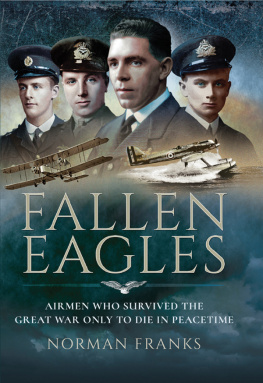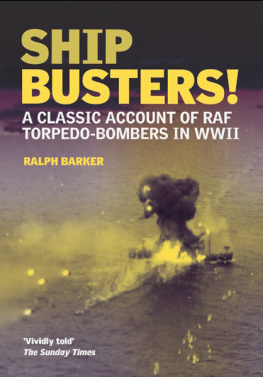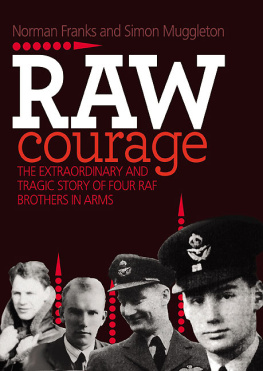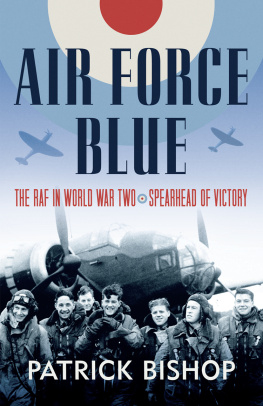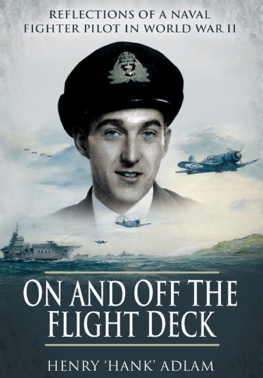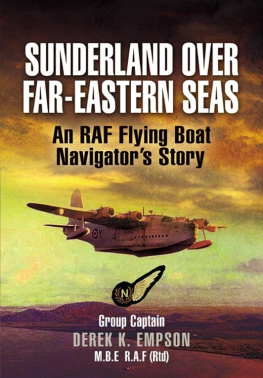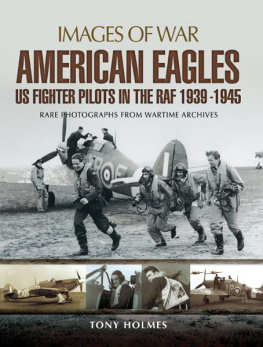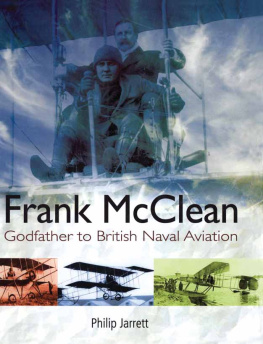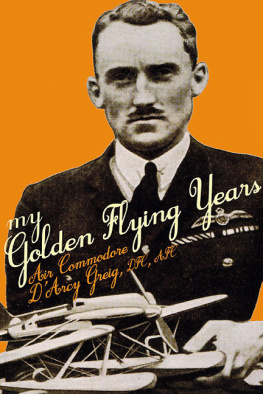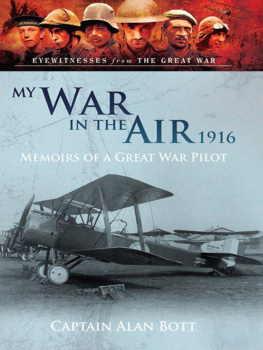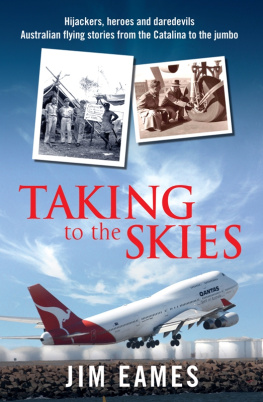
Fallen Eagles
Fallen Eagles
Airmen Who Survived The Great War Only to Die in Peacetime
Norman Franks
First published in Great Britain in 2017 by
Pen & Sword Aviation an imprint of
Pen & Sword Books Ltd
47 Church Street
Barnsley
South Yorkshire
S70 2AS
Copyright Norman Franks 2017
ISBN 978 1 47387 996 6
eISBN 978 1 47387 998 0
Mobi ISBN 978 1 47387 997 3
The right of Norman Franks to be identified as the Author of this Work has been asserted by him in accordance with the Copyright, Designs and Patents Act 1988.
A CIP catalogue record for this book is available from the British Library
All rights reserved. No part of this book may be reproduced or transmitted in any form or by any means, electronic or mechanical including photocopying, recording or by any information storage and retrieval system, without permission from the Publisher in writing.
Pen & Sword Books Ltd incorporates the imprints of Pen & Sword Archaeology, Atlas, Aviation, Battleground, Discovery, Family History, History, Maritime, Military, Naval, Politics, Railways, Select, Transport, True Crime, Fiction, Frontline Books, Leo Cooper, Praetorian Press, Seaforth Publishing and Wharncliffe.
For a complete list of Pen & Sword titles please contact
PEN & SWORD BOOKS LIMITED
47 Church Street, Barnsley, South Yorkshire, S70 2AS, England
E-mail:
Website: www.pen-and-sword.co.uk
Photographs
I have collected aviation photographs for a long time, sharing them with fellow historians and enthusiasts. Covering the airmen recorded in this book, pictures have come from various friends and sources, including several schools some of these airmen attended. Sadly, many of the contributors are no longer with us, such as Hal Giblin, Frank Cheesman, Russ Manning, Bill Bailey, Ola Sater, Neal OConnor, Mike OConnor, Chaz Bowyer; Stuart Leslie, Pete Kilduff and Jeff Jefford. To all of them I am indebted. Thanks also goes to Peter Devitt of the RAF Museum, to Paul Baillie, researcher at the Public Archives at Kew, and also to a number of librarians who were happy to scour old records or newspaper archives on my behalf for background information.
Introduction
A few years ago when surfing the internet I came across a list of RAF officers who had died between the end of the First World War and the end of 1928. After no more than a casual glance, certain names began to stand out. Taking a more careful look, I was amazed at how many of these names I recognised.
Several of them I knew had died following the war, yet the more I looked, the more I discovered. What also staggered me was the number who had died during the final weeks of 1918 and in 1919, not far short of 300. While the number reduced for 1920 onwards, there were still many more than I would have guessed. Obviously quite a number of deaths were noted as being natural causes which I assumed must have been deaths during the influenza pandemic, but over the early 1920s, there still seemed to be an inordinately large number of airmen dying.
I began to list what I shall refer to as the more interesting men who had died so soon after the end of hostilities, feeling a little sad that having survived the First Air War, they had died in a variety of ways during the early peace they had so gallantly fought for. I then rationalised the list by noting those airmen who had been decorated for their wartime actions and who had only died in aviation-related incidents. It was still a long list.
Initially I decided to write a series of articles about each lost, decorated airman, and some of these later appeared in The Aeroplane magazine, but a change of editor brought that to an end, so I decided to put together a book about some seventy men on my list who had continued flying, either in the RAF, other air forces, or in civilian flying situations, such as air races, aircraft testing, record breaking attempts, and so on. What I found was a myriad of interesting, if morbid, ways these former heroes had been lost. I also extended the period covered to, apart from one, the start of the Second World War. The total number of men covered stretched to over ninety.
The result here is, I hope, a fascinating variety of stories of airmen, still flying in the dawn of mans quest to fly, but whose luck finally ran out. Many of the names will be known to aviation enthusiasts and historians, but many others will read them as remarkable stories of how fate took a hand in their often short lives.
Norman Franks
Chapter One
191819
Captain S. T. Edwards DSC & Bar, 12 November 1918
I have shown the date here as 12 November, because that is the date Stearne Tighe Edwards was seriously injured in a crash, although he lingered in hospital for ten days before he passed away on the 22nd.
A Canadian from Franktown, Ontario, he was born on 13 February 1893 and grew up in Carleton Place, Ontario. His father was Edwin Dennis Edwards, married to Annie Caroline Edwards (ne Tighe). Sadly Edwin Edwards died in 1912. Soon after completing his education at Carleton Place High School, and becoming a civil engineer, Stearne Edwards found a job in railway construction so by 1914 he was working in Port Nelson, Hudson Bay. With the declaration of war, it is said he walked the 200 miles to Toronto in order to join the military, but one must assume, as a railway worker, he was able to get a ride some of the way, and hitched lifts by road.
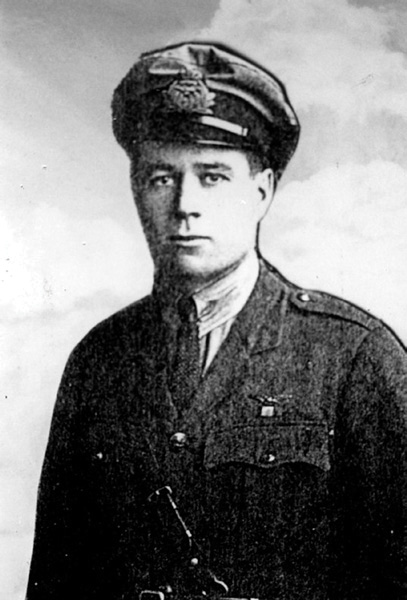
Captain S. T. Edwards DSC & Bar.
Desirous of joining the Royal Naval Air Service, he discovered that they were only taking men who already held a pilot licence, and as the local Curtiss School was full, he found a place at the Wright Brothers School in Dayton, Ohio. Learning to fly at his own expense, he received the necessary licence, No. 350, dated 13 October 1915, issued by the Aero Club of America.
Finally allowed to join the RNAS, he soon found himself aboard ship headed for Britain, and once his training was completed, he was posted to No. 3 Wing in 1916, flying operationally until February 1917. On 9 March he went to No. 11 Squadron, then moved to 6 Naval in April, but when this unit was disbanded in July, moved to 9 Naval. In September he started to shoot down enemy aircraft, achieving five victories by the end of April, and was awarded the Distinguished Service Cross. London Gazette, 2 November 1917:
In recognition of his services on the following occasions:
On the 3rd September, 1917, with his flight he attacked a two-seater Aviatik. The enemy machine was observed to go down in a vertical nose dive, and the enemy observer was seen to collapse in his cockpit.
On the 21st September, 1917, he drove a two-seater machine down out of control, which crashed into the sea.
On the 23rd September, 1917, he attacked an Albatros Scout, which crashed into the sea.
On the same date he attacked three Albatros Scouts. One got on the tail of another officers machine at very close range, shooting him up very badly. Flt. Cdr. Edwards attacked him from above, and the enemy machine turned on its back and went down in a vertical dive. He followed the enemy machine down to 8,000 feet, when its wings came off, and it fell to the ground.

